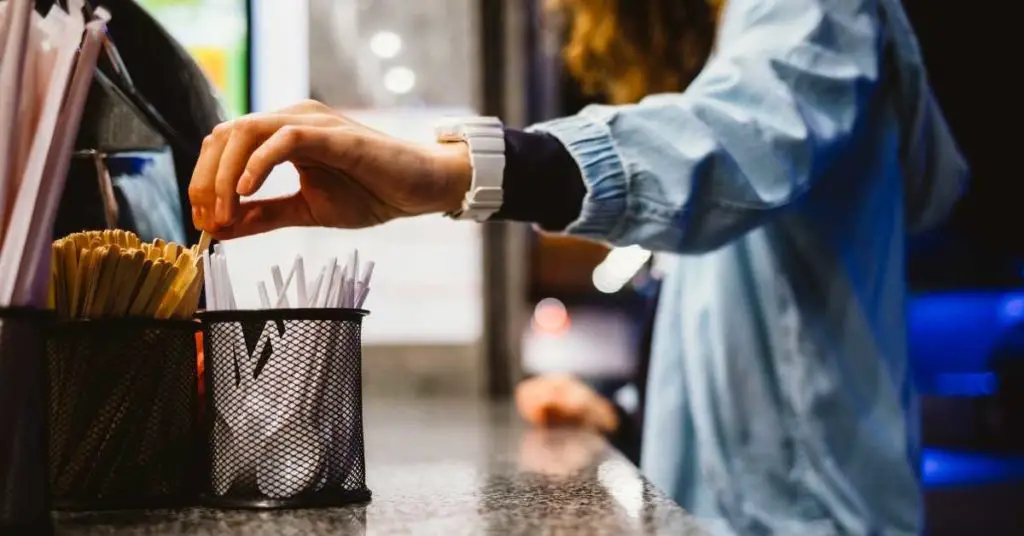Are you a coffee lover who also cares about the environment?
If so, creating an eco-friendly coffee routine is a great way to enjoy your favorite beverage while reducing your ecological footprint.
In this blog, we will explore why eco-friendly coffee routines matter and the benefits they offer.
Why Eco-friendly Coffee Routines Matter
With the increasing concern for environmental sustainability, it is crucial to adopt eco-friendly practices in every aspect of our lives, including our coffee consumption.
Traditional coffee production and brewing processes can have negative impacts on the environment, such as deforestation and excessive water usage.
By opting for an eco-friendly coffee routine, you can help preserve natural resources, support sustainable farming practices, and minimize waste generation.
Benefits of Creating an Eco-friendly Coffee Routine
Creating an eco-friendly coffee routine offers numerous benefits.
Firstly, you can enjoy a guilt-free cup of coffee knowing that it is produced and sourced in an environmentally responsible manner.
Secondly, by supporting eco-friendly coffee brands, you contribute to the livelihoods of coffee farmers and promote fair trade practices.
Additionally, adopting sustainable brewing methods and using reusable coffee accessories can significantly reduce waste, saving both money and the planet.
Uncovering the Best Coffee Roasters in Your Area
Choose Sustainable Coffee Beans

Importance of Sustainable Coffee
When creating an eco-friendly coffee routine, one of the essential steps is to choose sustainable coffee beans.
Sustainable coffee refers to coffee that is grown and harvested using environmentally friendly practices.
This includes methods that promote biodiversity, protect natural resources, and support the well-being of coffee farmers and communities.
Tips for Selecting Eco-friendly Coffee Beans
Look for certifications: When purchasing coffee beans, search for certifications such as Fair Trade, Organic, or Rainforest Alliance. These certifications ensure that the coffee has been produced using sustainable practices and that the farmers have been paid fair wages.
Prioritize shade-grown or bird-friendly coffee: These types of coffee are grown under the canopy of trees, promoting biodiversity and providing habitat for migratory birds.
Consider the origin: Coffee beans that are sourced from specific regions or countries may have stricter environmental regulations and sustainable farming practices. Research the origin of the coffee beans before making a purchase.
Support local and small-scale producers: Choosing beans from local and small-scale coffee farmers often ensures that they are using sustainable methods and helps support their livelihoods.
Opt for Manual Brewing Methods
When it comes to creating an eco-friendly coffee routine, one of the best choices you can make is opting for manual brewing methods.
Unlike other brewing methods that require electricity or disposable pods, manual brewing allows you to have full control over the brewing process, minimizing waste and reducing your environmental footprint.
Popular Eco-friendly Brewing Methods: Pour over and French press
- Pour Over: This method involves pouring hot water over coffee grounds placed in a paper or reusable filter. It allows for precise control over the brewing time and water temperature, resulting in a delicious and satisfying cup of coffee. With the pour over method, you can also choose reusable filters, significantly reducing paper waste.
- French Press: The French press method involves steeping coarsely ground coffee in hot water and then using a plunger to separate the brewed coffee from the grounds. This method does not require any filters, reducing the waste generated. Additionally, French press coffee makers are typically made of glass or stainless steel, making them long-lasting and durable.
By choosing manual brewing methods like pour over or French press, you can enjoy a flavorful cup of coffee while minimizing your environmental impact.
So grab your favorite manual brewing equipment, savor the process, and embrace an eco-friendly coffee routine.
Minimize Water Waste
Reuse, recycle, and repurpose water in your Coffee routine
One of the key aspects of creating an eco-friendly coffee routine is minimizing water waste. Here are some tips to help you achieve this goal:
- Reuse water: Instead of pouring excess water down the drain, consider reusing it for other purposes. For example, you can use coffee grounds to fertilize your plants or use leftover coffee as a natural cleaning solution.
- Recycle water: If you’re using a coffee machine, opt for models that have water recycling features. These machines collect unused water and reuse it for the next brewing cycle, minimizing water waste.
- Repurpose water: Instead of using fresh water to clean your coffee equipment, repurpose water from other sources. For instance, you can use leftover tea or water from boiling vegetables to clean your coffee grinder or French press.
By incorporating these simple practices into your daily coffee routine, you can minimize water waste and contribute to a more eco-friendly lifestyle.
So, go ahead and make a positive impact with each cup of coffee you brew.
Reduce Single-Use Coffee Pods

Many coffee lovers are guilty of relying heavily on single-use coffee pods for convenience. However, these pods contribute to significant waste and harm the environment. Fortunately, there are alternative options for brewing coffee that are more eco-friendly.
Here are a few suggestions to help you create an eco-friendly coffee routine:
Traditional brewing methods: Consider using traditional methods like a French press or a pour-over coffee maker. These options require minimal waste and are relatively easy to clean and maintain.
Reusable coffee pods: Invest in reusable coffee pods that you can refill with your choice of ground coffee. These pods eliminate the need for single-use ones and allow you to enjoy your favorite blends without guilt.
Compostable coffee pods: Look for compostable coffee pods made from biodegradable materials. These pods break down naturally without releasing harmful chemicals and are a more sustainable option.
Buy in bulk: Instead of purchasing small, individual coffee pods, buy coffee beans or ground coffee in bulk. This reduces packaging waste and allows you to measure out the desired amount for each brew.
Composting Coffee Grounds

Ideas for Reusing Coffee Grounds in Your Garden
Here are a few ideas for reusing coffee grounds in an eco-friendly way:
Compost: Coffee grounds are high in nitrogen content, making them an excellent addition to your compost pile. Mix them with other organic materials, such as leaves and vegetable scraps, to create nutrient-rich compost for your plants.
Fertilizer: Sprinkle coffee grounds around acid-loving plants like roses, azaleas, and blueberries. Coffee grounds are slightly acidic and can help maintain the soil’s pH balance, providing essential nutrients for these plants.
Worm food: If you have a worm composting bin, coffee grounds can be a great food source for your worms. They break down the coffee grounds, turning them into nutrient-rich worm castings that can be used to feed your plants.
Repel pests: Coffee grounds can act as a natural deterrent against common garden pests like slugs and snails. Sprinkle coffee grounds around plants or create a barrier to keep these pests away.
By reusing coffee grounds in your garden, you not only reduce waste but also enhance the health and productivity of your plants.
Remember to use coffee grounds in moderation and always consult specific care instructions for your plants.
Eco-Friendly Coffee Accessories
Reusable filters and cups
In today’s world, where sustainability is becoming increasingly important, it’s essential to adopt eco-friendly practices in all aspects of our lives, including our coffee routine.
One way to reduce waste is by investing in reusable filters and cups.
Using disposable paper filters every day contributes to a significant amount of waste that ends up in landfills.
By switching to reusable filters made from stainless steel or cloth, you can not only save money in the long run but also reduce your environmental impact.
These filters are easy to clean and can be used repeatedly, making them an excellent alternative.
By incorporating these eco-friendly coffee accessories into your routine, you can significantly reduce your waste and make a positive impact on the environment.
So, why not make the switch and enjoy your daily cup of coffee guilt-free?
Conclusion
Creating an eco-friendly coffee routine is not only beneficial for the environment but also allows you to enjoy your daily cup of joe guilt-free.
By incorporating reusable filters and cups into your routine, you can significantly reduce waste and minimize your environmental impact.
Investing in stainless steel or cloth filters not only saves money in the long run but also helps in reducing landfill waste.
Similarly, using a reusable coffee cup made from materials like stainless steel or bamboo is a simple way to reduce plastic pollution.
By making these small changes in your coffee routine, you can make a big difference in preserving our planet for future generations.
So, why not start today and be a part of the movement towards a more sustainable future?
Frequently Asked Questions
How can I make my coffee routine more eco-friendly?
There are several ways to make your coffee routine more eco-friendly. First, switch to reusable filters made from stainless steel or cloth instead of using disposable paper filters. This not only reduces waste but also saves money in the long run. Second, invest in a reusable coffee cup made from materials like stainless steel or bamboo to minimize plastic pollution. Lastly, consider purchasing coffee beans from sustainable and fair-trade sources to support environmentally-friendly practices.
Is it necessary to grind coffee beans at home?
While it is not necessary to grind coffee beans at home, it is recommended for the best flavor and freshness. Grinding your own beans ensures that you have control over the coarseness of the grounds and allows you to enjoy a more aromatic and flavorful cup of coffee.
Can I compost coffee grounds?
Yes, coffee grounds are an excellent addition to your compost pile. They are rich in nitrogen and add nutrients to the soil, making them a valuable addition to your gardening routine. Just make sure to mix the coffee grounds with other compostable materials to create a balanced mix.
How can I reduce energy consumption when brewing coffee?
To reduce energy consumption when brewing coffee, avoid leaving the coffee maker on for extended periods. Instead, brew only as much coffee as you need at the moment. Additionally, consider using alternative brewing methods like pour-over or French press, which require less energy compared to electric drip machines.
Can I recycle coffee pods?
Not all coffee pods are recyclable, especially those made from plastic or aluminum. However, some brands offer recyclable or biodegradable options. Make sure to check the packaging or contact the manufacturer to determine if the pods can be recycled. Alternatively, you can choose to use reusable coffee pods that are compatible with your coffee maker.
Best Wishes!






